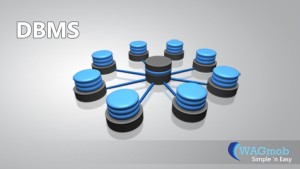 61. What do you mean by flat file database?
61. What do you mean by flat file database?
It is a database in which there are no programs or user access languages. It has no cross-file capabilities but is user-friendly and provides user-interface management.
62. What is “transparent DBMS”?
It is one, which keeps its Physical Structure hidden from user.
63. What is a query?
A query with respect to DBMS relates to user commands that are used to interact with a data base. The query language can be classified into data definition language and data manipulation language.
64. What do you mean by Correlated subquery?
Subqueries, or nested queries, are used to bring back a set of rows to be used by the parent query. Depending on how the subquery is written, it can be executed once for the parent query or it can be executed once for each row returned by the parent query. If the subquery is executed for each row of the parent, this is called a correlated subquery.
A correlated subquery can be easily identified if it contains any references to the parent subquery columns in its WHERE clause. Columns from the subquery cannot be referenced anywhere else in the parent query. The following example demonstrates a non-correlated subquery.
Example: Select * From CUST Where ’10/03/1990′ IN (Select ODATE From ORDER Where CUST.CNUM = ORDER.CNUM)
65. What are the primitive operations common to all record management systems?
Addition, deletion and modification.
66. Name the buffer in which all the commands that are typed in are stored?
‘Edit’ Buffer.
67. What are the unary operations in Relational Algebra?
PROJECTION and SELECTION.
68. Are the resulting relations of PRODUCT and JOIN operation the same?
No.
PRODUCT: Concatenation of every row in one relation with every row in another.
JOIN: Concatenation of rows from one relation and related rows from another.
69. What is RDBMS KERNEL?
Two important pieces of RDBMS architecture are the kernel, which is the software, and the data dictionary, which consists of the system-level data structures used by the kernel to manage the database You might think of an RDBMS as an operating system (or set of subsystems), designed specifically for controlling data access; its primary functions are storing, retrieving, and securing data. An RDBMS maintains its own list of authorized users and their associated privileges; manages memory caches and paging; controls locking for concurrent resource usage; dispatches and schedules user requests; and manages space usage within its table-space structures.
70. Name the sub-systems of a RDBMS.
I/O, Security, Language Processing, Process Control, Storage Management, Logging and Recovery, Distribution Control, Transaction Control, Memory Management, Lock Management.